Benguet State University RESEARCH JOURNAL CHED Accredited ...
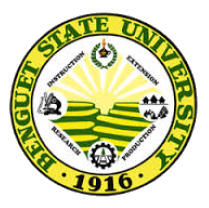
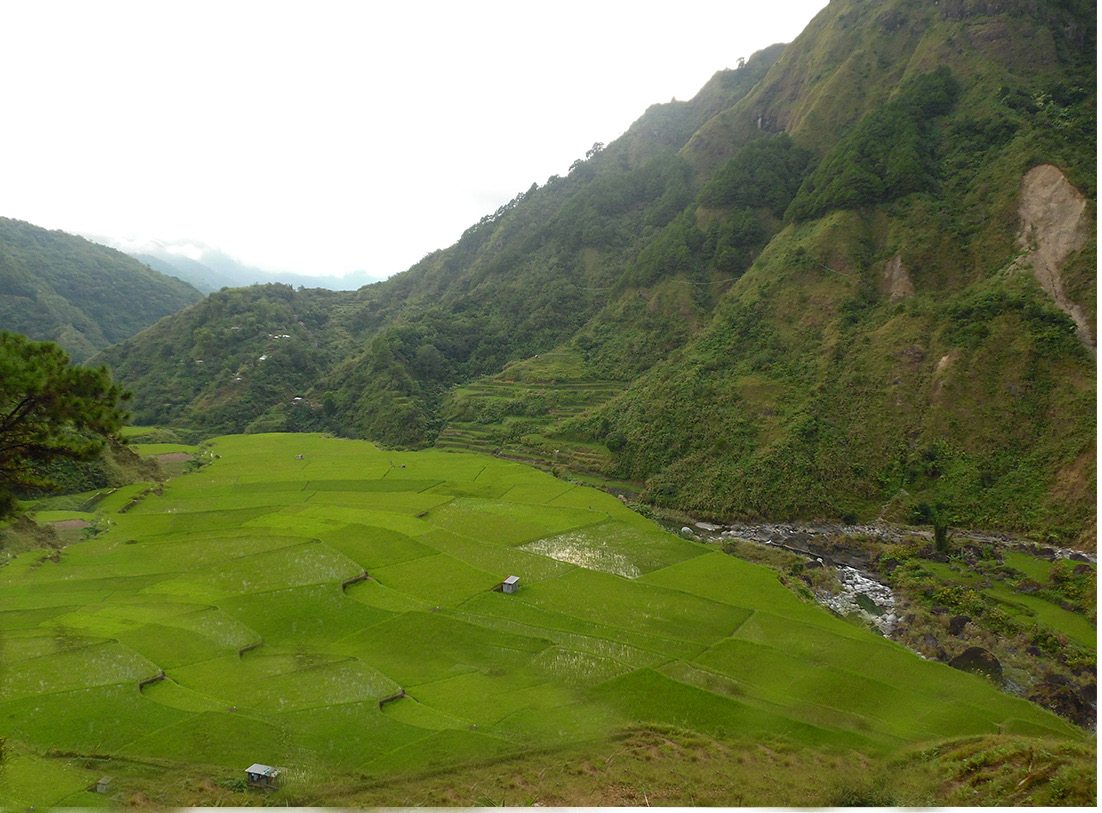
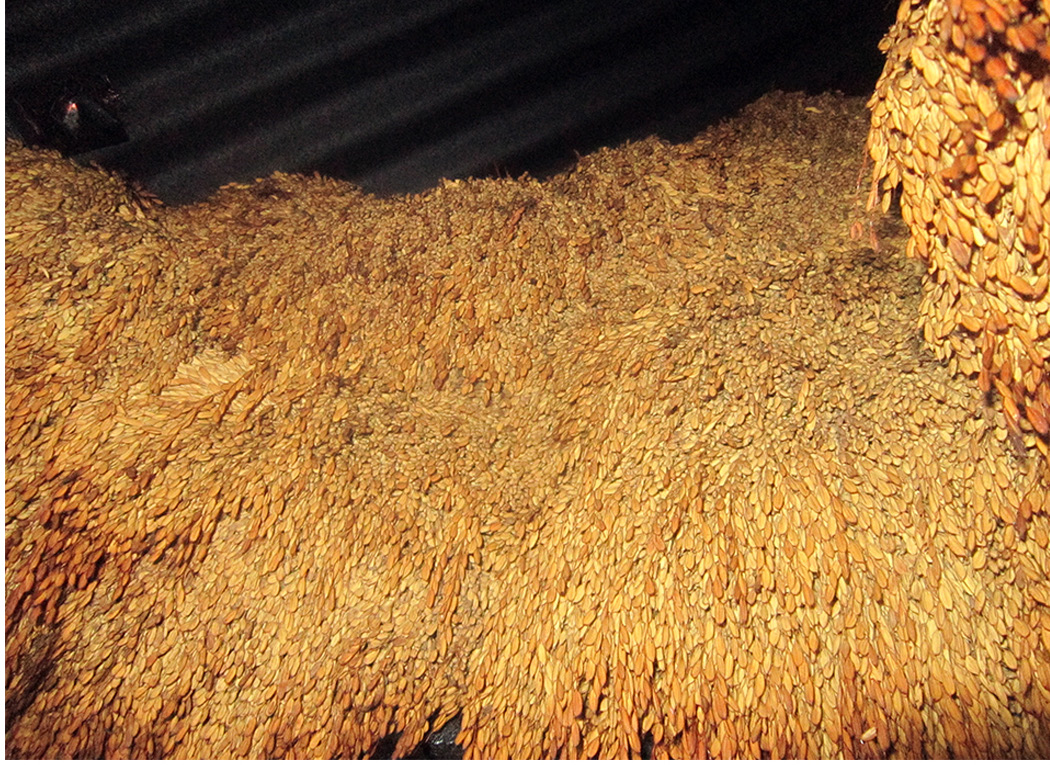
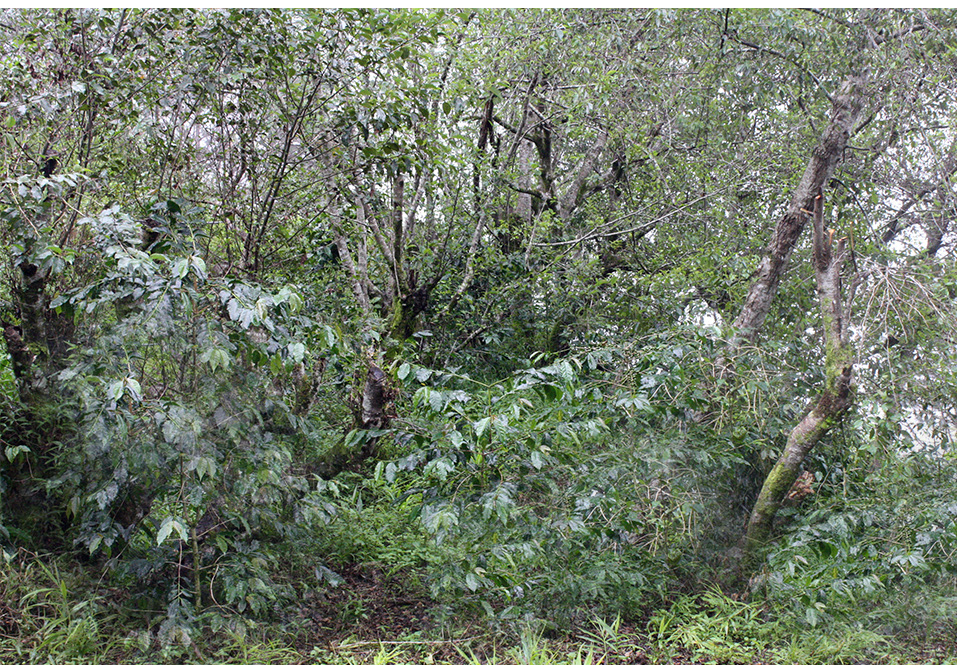
Benguet State University
RESEARCH JOURNAL
CHED Accredited Category B CMO No. 23 S. 2014
ISSN 0117-5297
No. 74
July-December 2015
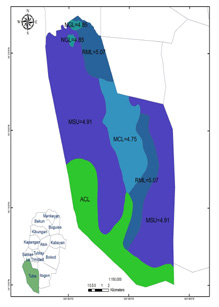
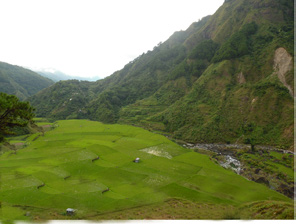
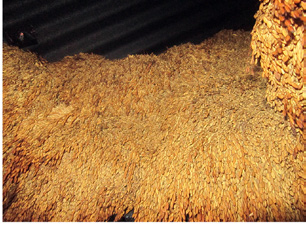
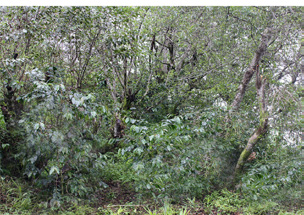
Editorial Board
Editor-in-Chief
Referees
Bernard S. Tad-awan, PhD, College of Agriculture
Elizabeth M. Sagubo, PhD
University of the Cordilleras
Technical Editors
Caridad P. Pagaduan, PhD
Joel V. Lubrica, PhD, College of Arts and Sciences
University of the Cordilleras
Maria Azucena B. Lubrica, PhD, College of Arts
Evelyn E. Oda, PhD
and Sciences
Saint Louis University
Elizabeth T. Dom-ogen, College of Arts and Sciences Ryan P. Manuel, PhD
Romeo A. Gomez Jr., PhD, College of Arts
Nueva Vizcaya State University
and Sciences
Teresita K. Mangili, PhD
Janet S. Luis, PhD, College of Agriculture
Highland Agricultural Resources Research and
Asuncion L. Nagpala, PhD, College of Agriculture
Development Consortium
Jocelyn C. Perez, MSC, College of Agriculture
Lorenza G. Lirio, PhD
Carlito P. Laurean, PhD, College of Agriculture
Benguet State University Retiree
Belinda A. Tad-awan, PhD, College of Agriculture
Criselda M. Balisacan, PhD
Danilo P. Padua, PhD, College of Agriculture
Mariano Marcos State University
Leoncia L. Tandang, PhD, College of Agriculture
Dionisio S. Bucao, PhD
Araceli G. Ladilad, PhD, College of Agriculture
Mariano Marcos State University
Jose G. Balaoing, PhD, College of Agriculture
Shierel F. Vallesteros, PhD
Nueva Vizcaya State University
Percival B. Alipit, PhD
Editorial Consultants
Benguet State University Retiree
Lily Ann D. Lando, PhD, WorldFish
Carlito P. Laurean, PhD
Juliet M. Ochasan, PhD
Vice President for Research and Extension
BPI- Baguio National Crop Research and
Development Center
Ben D. Ladilad, PhD, CESO III
Jocelyn A. Bernabe, PhD
University President
Mariano Marcos State University
Editorial Staff
Lay-out Artist
Circulation Manager
Proofreaders
May D. Songaben
Anabelle O. Tostos
Dominga P. Magnanang
OVPRE- Publication Office
OVPRE- Publication Office
May D. Songaben
Mary Joy G. Maguide
Anabelle O. Tostos
OVPRE- Publication Office
This is a refereed Journal
This multidisciplinary scientific journal publishes
selected papers presented during the annual Benguet State University
Agency In-House Review (Agriculture, Forestry and Natural Resources, Social and Education Sectors)
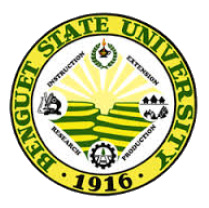
Benguet State University
RESEARCH JOURNAL
CHED Accredited Category B CMO No. 23 S. 2014
ISSN 0117-5297
No. 74
July-December 2015
CONTENTS
Agricultural and Forestry
SOIL QUALITY ASSESSMENT OF CONVENTIONAL
AND ORGANIC FARMS IN LA TRINIDAD, BENGUET..........................1-9
C. G. G. Datic, C. P. Laurean and A. L. Nagpala
SOIL FERTILITY STATUS OF MAJOR AGRICULTURAL AREAS IN THE
SEVEN MUNICIPALITIES OF BENGUET...............................................10-34
C. P. Laurean, A. W. Fagyan and E. F. Dayap
GROWTH AND YIELD PERFORMANCE AND GENOTYPE
X ENVIRONMENT INTERACTION OF CABBAGE VARIETIES UNDER
ORGANIC PRODUCTION IN BENGUET.................................................35-49
B. A. Tad-awan and D. A. Basquial
QUARANTINE AND OTHER IMPORTANT DISEASES
AFFECTING ECONOMIC CROPS IN THE CORDILLERA.................50-61
J. S. Luis, J. C. Perez, G. S. Backian, J. T. Bawayan, C. B. Codod and C. G. Kiswa
CULTIVATION AND CONSERVATION OF TRADITIONAL FOOD
CROPS AND PERCEPTIONS OF FARMERS ON BIODIVERSITY
LOSS IN THE CORDILLERA ADMINISTRATIVE REGION...............62-81
B. A. Tad-awan and E. J. D. Sagalla
CARBON STOCK ASSESSMENT OF SELECTED AGROFORESTRY
SYSTEMS IN BENGUET.............................................................................82-95
M. R. Parao, K. A. Laruan and M. T. Palista
Mathematics and Statistics
REGRESSION ANALYSIS OF THE BALILI RIVER’S
BIOLOGICAL TO PHYSICO-CHEMICAL
CHARACTERISTICS................................................................................96-101
B. B. Dolipas, J. Abiasen, J. V. Lubrica and J. L. S. Ramos
STUDENTS’ MATHEMATICAL KNOWLEDGE CONSTRUCTION
PATTERNS IN PROBLEM SOLVING CONTEXT .............................102-110
S. L. Oryan
All communications should be addressed to:
THE EDITOR
BSU Research Journal
Benguet State Univeristy
La Trinidad, Benguet 2601, Philippines
Telefax:( +6374) 422-5547
Email address: bsupublications@gmail.com
repo@bsu.edu.ph
Website: www.bsu.edu.ph

Benguet State University Research Journal (BRJ) July-December 2015, 74: 1-9
Copyright 2015, Benguet State University
Soil Quality Assessment of Conventional and Organic Farms
in La Trinidad, Benguet
Crissa Genice G. Datic, Carlito P. Laurean and Asuncion L. Nagpala
College of Agriculture, Benguet State University
ABSTRACT
The study was conducted in La Trinidad, Benguet to compare the physical and
chemical properties and microbial biomass of soils in conventional and organic farms.
The physical properties of the soil analyzed were bulk density, aggregate stability and
water holding capacity while the chemical properties were soil pH, organic matter,
cation exchange capacity, phosphorus and potassium. Microbial abundance of bacteria
and fungi was likewise determined.
Soil samples from nine vegetable gardens representing organic farms and three for
conventional farms were collected.
The results show that the three organic farms have significantly better physical
and chemical properties than the conventional farms. Among the nine sampling areas
representing organic farms, the Benguet State University (BSU) Organic Agriculture
Demo-farm had significantly better physical and chemical properties than the other two
organic farms.
Likewise, microbial biomass was significantly higher in organic farms than in
conventional farms. Among the three organic farms, the highest bacterial count was
observed from the College of Agriculture-Department of Agronomy Organic Farm while
the lowest was from the Climate-Smart Agriculture organic farm. For fungal abundance,
Climate-Smart Agriculture organic farm has the highest while the lowest was observed
from the BSU Organic Agriculture Demo-farm.
Keywords: conventional farms, organic farms, physical properties, chemical properties
and microbial biomass

Benguet State University Research Journal (BRJ) July- December 2015, 74: 10-34
Copyright 2015, Benguet State University
SOIL FERTILITY STATUS OF MAJOR AGRICULTURAL AREAS
IN THE SEVEN MUNICIPALITIES OF BENGUET
Carlito P. Laurean, Alexander W. Fagyan and Emilia F. Dayap
College of Agriculture, Benguet State University
ABSTRACT
The major agricultural soils of the seven municipalities of Benguet namely: Bokod,
Itogon, Kabayan, Kapangan, La Trinidad, Sablan and Tuba were assessed of their fertility
status to develop maps reflecting the soil fertility and develop fertilizer recommendation
for specific crop grown and lime requirement of the acidic soil from March 2010 to
December 2011. One composite sample representing the different soil series from the
seven municipalities were collected and analyzed for soil pH; organic matter (OM);
soil nutrients available phosphorus (P) and exchangeable potassium (K); and cation
exchange capacity (CEC).
Results show that majority of the agricultural soils in Kabayan, La Trinidad, Sablan
and Tuba have strongly acidic soils unfavorable for crop production. Only the soils of
Bokod, Itogon and Kapangan are moderately favorable to favorable although some
sampling sites of the areas have pH values below 5.0.
Agricultural soils of Kapangan have deficient organic matter and soil nutrient
phosphorus whereas soils in the municipalities of Bokod, Itogon, Kabayan, La Trinidad,
Sablan and Tuba have moderate amounts of organic matter and phosphorus. Soils in
Bokod, Kabayan, La Trinidad and Tuba have moderate amount of soil nutrient K while
soils of Itogon, Kapangan and Sablan are deficient of the element. The cation exchange
capacity of the soils are adequate in all the soils studied in the seven municipalities of
Benguet.
Based from the results of soil analysis soil fertility maps per municipality and
fertilizer recommendation for specific crops grown including the lime requirement of
acid soils were produced.
Keywords: soil nutrient, soil series, lime requirement and soil fertility status

Benguet State University Research Journal (BRJ) July-December 2015, 74: 35-49
Copyright 2015, Benguet State University
GROWTH AND YIELD PERFORMANCE AND GENOTYPE X
ENVIRONMENT INTERACTION OF CABBAGE VARIETIES
UNDER ORGANIC PRODUCTION IN BENGUET
Belinda A. Tad-awan and Darwin A. Basquial
College of Agriculture, Benguet State University
ABSTRACT
Five cabbage varieties viz Ace Green, Gladiator, Lucky Ball, Rare Ball and Scorpio
were evaluated at representative locations in Benguet: Balili, La Trinidad (1,332 m asl);
Bonglo, Atok (2,085 m asl); and Tulodan, Atok (2,330 m asl) following the Philippine
National Standards (BAFPS, 2003) for organic vegetable production. Genotype x
Environment (G x E) analysis was done on yield to determine stability of the varieties
across locations and seasons using the Additive Main Effects Multiplicative Interaction
(AMMI) model.
The cabbage varieties had varied performance in the different locations during the
wet and dry seasons. The highest yielding, most stable and preferred cabbage varieties
across locations and seasons were Rare Ball, Lucky Ball and Scorpio. These varieties
are recommended for organic production in the three agro-ecological zones of Benguet.
Keywords:growth and yield performance, genotype by environment interaction,
cabbage varieties and organic production

Benguet State University Research Journal (BRJ) July-December 2015, 74: 50-61
Copyright 2015, Benguet State University
QUARANTINE AND OTHER IMPORTANT DISEASES AFFECTING
ECONOMIC CROPS IN THE CORDILLERA
Janet S. Luis, Jocelyn C. Perez, Grace S. Backian, Jennie T. Bawayan,
Cynthia G. Kiswa and Clarence B. Codod
College of Agriculture, Benguet State University
ABSTRACT
The Cordillera Administrative Region provides the ideal environment for the
production of planting materials of semi-temperate vegetables, root crops, beverages,
fruits and ornamentals. However, the presence of degenerative diseases caused by
viruses do not only reduce yield in time but also affects the planting materials produced.
Under the quarantine regulations, the movement of planting material from country of
origin to the destination country primarily requires the indexing of plant viruses before
they are transported and planted in the field. Hence, a survey was conducted in Abra,
Apayao, Benguet, Ifugao, Kalinga and Mountain Province to identify and assess the
incidence and severity of diseases of quarantine importance affecting high value crops.
For virus diseases, 100% incidence of Tomato Mosaic Virus (TMV) was recorded in
one hectare tomato farm in Bokod, Benguet; Banana Bunchy Top Virus (BBTV) with
40% incidence at Sablan, Benguet (0.20 ha); 20% in Balbalan, Kalinga (0.03 ha), 30% at
Conner, Apayao (2.5 ha) and 20% in Aguinaldo, Ifugao (1.5 ha); Turnip Yellow Mosaic
Virus (TYMV) in 80% of Chinese cabbage plants (0.20 ha) at Buguias, Benguet;15%
incidence of Potato Aucuba Mosaic Virus (PAMV) in potato at Bauko, Mountain
Province (0.25 ha); and 12% incidence of yellowing, little leaf and mosaic symptoms in
coffee seedlings in nurseries in Tublay, Benguet.
For bacterial diseases, 10% incidence of mushroom bacterial blotch (Pseudomonas
sp.) was noted in La Trinidad and Ralstonia solanacearum Race 1 causing bacterial wilt
was isolated from seed potatoes collected in Atok, Benguet. Rose crown gall was known
to be a serious problem in white rose in Alno, La Trinidad, Benguet.
Fungal diseases documented were yam anthracnose, chrysanthemum white rust,
anthurium leaf spot, strawberry leaf spot and berry rot, coffee leaf spot and Fusarium
wilt in banana while those due by fungal-like organisms were potato late blight and taro
leaf blight.
Key words: quarantine diseases, semi-temperate vegetables and high value crops

Benguet State University Research Journal (BRJ) July-December 2015, 7: 62-81
Copyright 2015, Benguet State University
CULTIVATION AND CONSERVATION OF TRADITIONAL FOOD
CROPS AND PERCEPTIONS OF FARMERS ON BIODIVERSITY
LOSS IN THE CORDILLERA ADMINISTRATIVE REGION
Belinda A. Tad-awan and Esther Josephine D. Sagalla
College of Agriculture, Benguet State University
ABSTRACT
Traditional food crops are being planted for decades in the Cordillera Administrative
Region and have been cultivated for various purposes. Traditional crops in the six
provinces of the Region were documented and the perceptions of 221 farmers on the
loss, utilization and conservation of traditional food crops were determined. A structured
questionnaire containing indicators for the loss, utilization and conservation of traditional
food crops was used. The farmer-respondents have been introduced to these crops by
their forefathers from their childhood which they are cultivating due to their aroma,
delicious taste and resistance to pests. Results show that there are 22 major traditional
crops being cultivated in the Cordillera Administrative Region. The most commonly
planted are rice, cowpeas, sweet potato, corn, taro and winged bean. Some traditional
varieties are short-lived due to the introduction of high yielding varieties. Specifically,
traditional varieties of rice had the highest loss since the farmers shifted to planting high
value crops. Majority of the farmer-respondents utilize traditional food crops as source
of food and additional income for their families. The farmers also conserve these food
crops through continuous cultivation, storage of seeds and seed exchange with other
farmers. In spite of the utilization and conservation efforts, the fact remains that the
cultivation of traditional food crops especially rice is decreasing. Thus, there should
be continuous conservation and establishment of community gene banks for traditional
food crops.
Keywords: traditional crops, traditional knowledge, conservation, Cordillera
Administrative Region

Benguet State University Research Journal (BRJ) July-December 2015, 74: 82-95
Copyright 2015, Benguet State University
CARBON STOCK ASSESSMENT OF SELECTED AGROFORESTRY
SYSTEMS IN BENGUET
1Marissa R. Parao, 1Kenneth A. Laruan, 2Mendil T. Palista
1College of Forestry, Benguet State University
2Research Assistant, HERRC, Benguet State University
ABSTRACT
Agroforestry is a sustainable land use management system and has great role in
adapting to expected changes in climate by small holder farmers. The provision of
permanent cover such as trees served as important carbon stocks and the practice can
reduce carbon emission. Nevertheless, very few studies investigated the potential of
Agroforestry to sequester carbon. The objective of this study is to evaluate and compare
the carbon stocks of the different components of agroforestry systems that are commonly
practiced in Benguet and to identify practices that can help improve carbon sequestrations
of agroforestry farms. Representative farms of the most commonly practiced agroforestry
systems from Atok, Tuba, La Trinidad and Sablan were surveyed for their carbon stocks
in 2014. Results indicate that the most commonly practiced agroforestry systems were
chayote and coffee-based agroforestry systems. In all the agroforestry farms evaluated,
the bulk of the carbon stock comes from their tree and soil components and the carbon
density and CO sequestered are highest among chayote-based farm (208.2 t ha-1),
2
anthurium-based agroforestry (171.45 t ha-1) and the vegetable-based agroforestry
with coffee(156.16 t ha-1). Further, practices that increase tree components and vertical
layering in crops as well soil and water conservation measures can help improve Carbon
sequestration in an agroforestry farm.
Keywords: agroforestry systems, carbon stock and assessment

Benguet State University Research Journal (BRJ) July-December 2015, 74: 96-101
Copyright 2015, Benguet State University
REGRESSION ANALYSIS OF THE BALILI
RIVER’S BIOLOGICAL TO PHYSICO-CHEMICAL CHARACTERISTICS
Bretel B. Dolipas, Jovalson T. Abiasen, Joel V. Lubrica
and Jennifer Lyn S. Ramos
College of Arts and Sciences, Benguet State University
ABSTRACT
The study determined the interrelated physico-chemical characteristics of the Balili
River water system and the regression analysis of the dissolved oxygen and biological
oxygen demand with the derived interrelated physico-chemical factors of the Balili river
water system. Secondary data regularly monitored by the Environmental Management
Bureau of the Department of Environment and Natural Resources, Cordillera
Administrative Region was used in the Study. Factor and Regression analyses were the
statistical tools used in the study.
There were four derived interrelated physico-chemical factor of the Balili River
water system. These factors are the following: F1: Physico-chemical Factor; F2: pH-
Conductivity-cadmium-phosphate Factor; F3: Temperature-Coliform Factor; and
F4: Lead-TSS Factor. The Dissolved Oxygen (DO) of the Balili River water system
was correlated to the four factors derived as shown by the equation: DO = 8.242 –
0.26F1 + 0.18F2 + 0.084F3 – 0.069F4, but not significantly correlated. The Biological
Oxygen Demand is correlated with the four derived factors shown in the following
equation: BOD = 51.643 + 0.74 F1 – 0.122F2 + 0.143F3 + 0.16F4. The first factor was
significantly interrelated with oxygen demand while the other three factors were not. It
is recommended that water treatment procedures should be undertaken to improve the
dissolved oxygen and oxygen demand of the Balili River water system.
Keywords: Balili river water system, dissolved oxygen (DO), biological oxygen
demand (BOD)

Benguet State University Research Journal (BRJ) July- December 2015, 74: 102-110
Copyright 2015, Benguet State University
STUDENTS’ MATHEMATICAL KNOWLEDGE CONSTRUCTION
PATTERNS IN PROBLEM SOLVING CONTEXT
Serano L. Oryan
College of Arts and Sciences, Benguet State University
ABSTRACT
The study investigated the nature of knowledge construction patterns (or thinking
schemata) students manifested in solving a non-routine problem, distribution of
students according to knowledge construction patterns and their success rates when
grouped according to relatedness of course to mathematics and degree of exposure to
mathematics. There were 217 respondents from different degree programs and year levels
who were given carefully selected non-routine problem which they solved in one hour.
Results showed there exist seven different knowledge construction patterns with
varying degrees of success. The proportion of respondents exhibiting successful
knowledge construction patterns accounts for 12.9%, partially successful, 48.93%
and not successful, 39.17%, thus indicating that large proportion of students need
appropriate training in solving non-routine problems to improve their solving abilities.
The proportions of respondents manifesting similar knowledge construction patterns
across groups, as well as their success rates, are not significantly different. The
results indicate that motivation and exposure to routine mathematics are not factors
that differentiate between those with successful knowledge construction patterns
and those with less successful ones and that students’ mathematics learnings are
independent of the development of productive thinking schemata and solving abilities.
Keywords: problem solving, mathematical knowledge construction patterns and
thinking schemata
INFORMATION FOR CONTRIBUTORS
(Abridged/improved from the editorial policies of the Benguet State University)
1. All manuscripts must be the result of research activities (technical or social) that are relevant to the development
thrust of the University and should not have been published elsewhere.
2. Acceptance of manuscript is on the basis of the review and approval by a corps of technical editors and selected
referees.
3. Original photos should be submitted in PNG or JPEG format with corresponding captions.
4. The manuscript should not exceed 40 pages, typed double spaced in 12-point Times New Roman on one side of
81/2” paper with margins of 3.81 cm on the left and 2.54 cm top, right and bottom and must be submitted in hard
and electronic copy via bsupublications@gmail.com using MS Word Program.
5. The manuscript should be organized in the following order: (a) Title; (b) Authors/s; (c) Authors/s position;
(d) Abstract; (e) Introduction; (f) Materials and Methods; (g) Results and Discussion; (h) Conclusions and
Recommendations; (i) Acknowledgment, optional; and (j) Literature Cited ; and written all centered.
6. The title should be a precise and concise description of the contents of the manuscripts without abbreviations and
typed in upper case. If the paper is a portion of a larger manuscript, which shall be serialized and will be indicated
in a superscript followed by a brief explanation.
7. The author(s) name(s) is/are written in this way: initial letter for the middle names only, first and family names in
full and typed in title case. Senior author comes first in case of more than one author.
8. The abstract must be 200 words or less, summarizing the main points of the articles.
9. The introduction should contain scope and statement of the problem, brief survey of previous work and objectives
and importance of the study.
10. Citations in the text follows the name and year system, e. g.
Single Author:
(Adeyemo, 2010), Yeo (2009) or Boquiren (n.d.)
Two Authors:
Pladio and Villasenor (2004), (Pladio and Villasenor, 2004)
More than Two Authors:
Folbre et al. (2011) or (Folbre et al., 2011).
11. Materials and methods should describe very concisely but comprehensively the materials used, techniques, and
lay-out of the research.
12. Scientific names and other foreign expressions such as in situ, et al., i.e., and other similar expressions are italicized.
Technical terms, abbreviations and acronyms must be defined.
13. In abbreviating or using acronyms, the System International-Units (SI) of the metric system should be followed.
Such abbreviations or acronyms should be written first in full before the truncated terms in parenthesis, e.g. thin-
layer chromatography (TLC). If this information is given in the abstract, it should be re-identified when mentioned
the first time.
14. The results should be presented logically and in objective way and conclusions stated as valid facts.
15. The discussion of results should lead to interpreting significance and /or possible similarity or discrepancy from
previous findings.
16. A statement on conflict of interest should be declared by authors before the Acknowledgment section. Where
appropriate, Conflict of Interest statements may be in instances such as:” There are no known conflicts interests
associated with the publication” or “There has been no significant financial support for the work that could have
influenced its outcome.” Whenever appropriate, acknowledgements are made relevant for contributions in terms
of financial and technical support.
17. Literature cited in the text should be indicated as follows: Consolacion (2000) or (Consolacion, 2000); for two
authors, Colting and Maddul (1999) or (Colting and Maddul, 1999); for more than two authors, Bucu et al. (1999)
or (Bucu et al., 1999).
18. Electronic sources must be cited as follows: author (s), year, title, date of retrieval and the complete Uniform
Resource Locator (URL) of the site.
19. Listing of literature cited is by author(s) in alphabetical order. The list contains: author (s), year, title of literature,
publisher, address of publisher, volume and issue numbers and inclusive pages (printed as 1(2):1-9). Names of
authors are typed in upper case: for single author, surname (separated by a comma) first before the initials of the
given and middle names; for multiple authors, surname then initials of senior author followed by initials then
surnames of succeeding authors. Authors are separated by commas.
Single author:
Mondejar, L.A. 1998. Understanding Student Judgments of Teaching Performance: A Conjoint Approach.
Unpublished Doctoral Dissertation, University of the Philippines. Diliman. Quezon City.
Durano, M. 2008. From profit to provisioning: A gender equitable public policy. Development Alternatives
with Women for a New Era. QC: Miriam College.
Eriksen, T. 2001. Small Places, Large Issues. An introduction to Social and Cultural Anthropology. 2nd ed.
London: Pluto Press.
Two authors:
Hallauer, A. R. and F. O. Miranda. 1980. Quantitative Genetics in Maize Breeding. Iowa State University
Press. Ames, Iowa. Pp. 49-52.
Carrasco, C. and M. Serrano. 2011. Lights and Shadows of Household Satellite Accounts: The Case of
Catalonia, Spain. Feminist Economics 17 (2): 68-85. IAFFE: Routledge Taylor and Francis Group.
Crisologo, L. C. and L. Berlage. 2006. Bargaining in rural households: a study of decision on labor market
participation in the Cordillera. The Philippine Review of Economics. 48 (2): 249- 537.
More than two authors:
Linsley, R., J. Franzini, D. Freyburg and G. Tchobanoglous. 1992. Water Resources Engineering. 4th ed.
McGraw-Hill, Inc. New Jersey, USA.Pp. 510-532.
Aguilar, N. O., B. L. Cardenas and M. A. O. Cajano. 2000. Spore and Seed bearing Plants of Mount Pulag,
Benguet, Philippines. Museum of Natural History. UPLB, College, Laguna, Philippines.
Braunstein, E. B., I. P. Van Staveren and D. Tavani. 2011. Embeding care and unpaid work in Macroeconomic
Modelling. A structural Approach. Feminist Economics. 17, 4-31.
20. If necessary, protocols for manuscript preparation can be requested from the Editorial Board.
21. Please see the latest issue of the Journal for concrete details as to format.
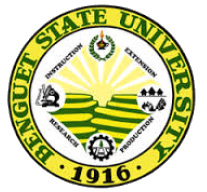
BSU Research Journal No. 75
BSU Research Journal No. 75
VISION
A premier State University in Asia.
MISSION
Development of people imbued with academic excellence, social conscience and productivity; and
actively generating and promoting environment-friendly, useful technologies to improve quality of life.
GOALS
1. Strengthen and sustain a working environment conducive for excellence;
2. Provide quality education that will produce globally competitive and well-rounded graduates;
3. Provide quality and client-responsive research and extension services;
4. Strengthen and enhance institutional capability in generating revenue towards self-reliance
5. Develop and strengthen quality management system towards economy; and
6. Strengthen and expand private public partnership.
PURPOSE
* To provide quality education that will produce globally-competitive graduates;
* To generate and disseminate appropriate knowledge and technologies that will promote sustainable
resource development;
* To strengthen and enhance institutional capability in generating revenue towards self-reliance;
* To establish competent and effective services geared towards efficiency and economy; and
* To develop harmonious and cooperative University Community relationships.
Benguet State University
RESEARCH JOURNAL
All communications should be addressed to:
THE EDITOR
BSU Research Journal
Benguet State University
La Trinidad 2601 Benguet, Philippines
Telefax: (+6374) 422-5547
Email address: bsupublications@gmail.com
Website: www.bsu.edu.ph
15 15